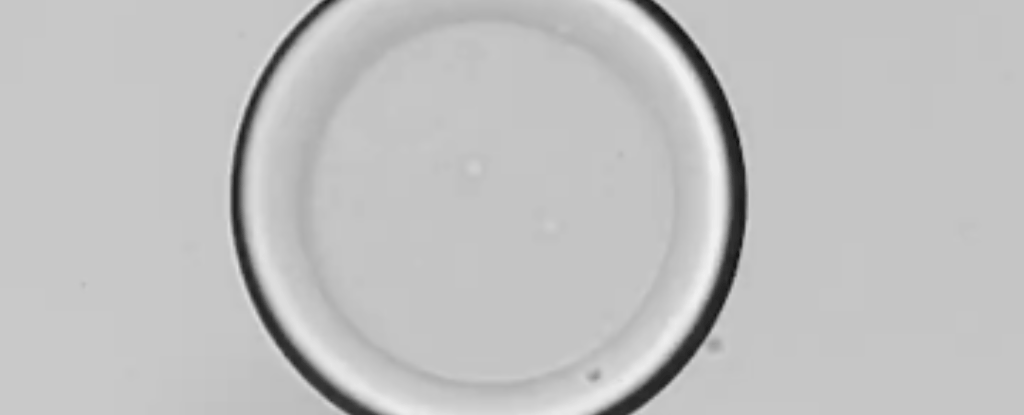Products You May Like
By disrupting the thermodynamic equilibrium of liquids, physicists have made them behave quite differently from how they do in nature – managing to coax liquids into straight-sided squares and hexagons, and patterns of lattices.
This is not just fascinating for its own sake, but could help us better understand how liquids behave under different conditions – which has implications for a range of fields, from physics to medical research.
“Things in equilibrium tend to be quite boring,” said physicist Jaakko Timonen of Aalto University in Finland.
“It’s fascinating to drive systems out of equilibrium and see if the non-equilibrium structures can be controlled or be useful. Biological life itself is a good example of truly complex behavior in a bunch of molecules that are out of thermodynamic equilibrium.”
You probably see thermodynamic equilibrium regularly without even realizing it. It’s the phenomenon that allows your cold milk to mix evenly throughout your hot coffee, as the temperatures – and therefore the kinetic energy in the molecules – of the two liquids even out.
But when thermodynamic equilibrium is disrupted, interesting things can happen, such as the spontaneous emergence of ordered states. This is of interest to scientists and engineers. It can help us not only understand thermodynamic equilibrium itself, but various materials.
The research team, led by Aalto physicist Geet Raju, designed an experiment to explore this. They placed two liquids, oils, with different conductivities and relative permittivities under confinement between two flat, non-wetting surfaces to induce a quasi-two-dimensional plane. Then, they applied an electric field.
“When we turn on an electric field over the mixture, electrical charge accumulates at the interface between the oils,” said physicist Nikos Kyriakopoulos of Aalto University. “This charge density shears the interface out of thermodynamic equilibrium and into interesting formations.”
In nature, liquids are curvy. In the absence of a container, they form plump, round little droplets, bound by their surface tension that contains them in the smallest surface area possible. In the team’s experiments, they were induced to arrange themselves into patterns that never occur in liquids in nature.
These included the aforementioned straight-sided geometric shapes, as well as interconnected lattices. The team also created toruses (donut shapes) that don’t occur generally in nature, because the liquid tends to fill the hole in the middle, and also filament networks. They even saw filaments that rotate around an axis.
“All these strange shapes are caused and sustained by the fact that they are prevented from collapsing back into equilibrium by the motion of the electrical charges building up at the interface,” Raju said.
The ability to control the shapes generated by the application of a finely tuned electric field has a wide range of very exciting applications, the researchers said.
For example, it might be used to assemble objects in specific locations in larger structures, and for liquid self-assembly. The rotating filaments have implications for particle physics. Last, but certainly not least, is the potential in optics.
“The biphasic system studied here offers exciting possibilities as optical devices because of the exceptional control over the liquid-liquid interface and fluidic structures with electric field,” the researchers wrote in their paper.
“This will immediately lead to technologically relevant voltage-controlled non-equilibrium optical diffusers and structural colors based on photonic crystals and glasses by controlling the formation, interactions, and self-assembly of the various fluidic structures demonstrated here.”
The research has been published in Science Advances.
